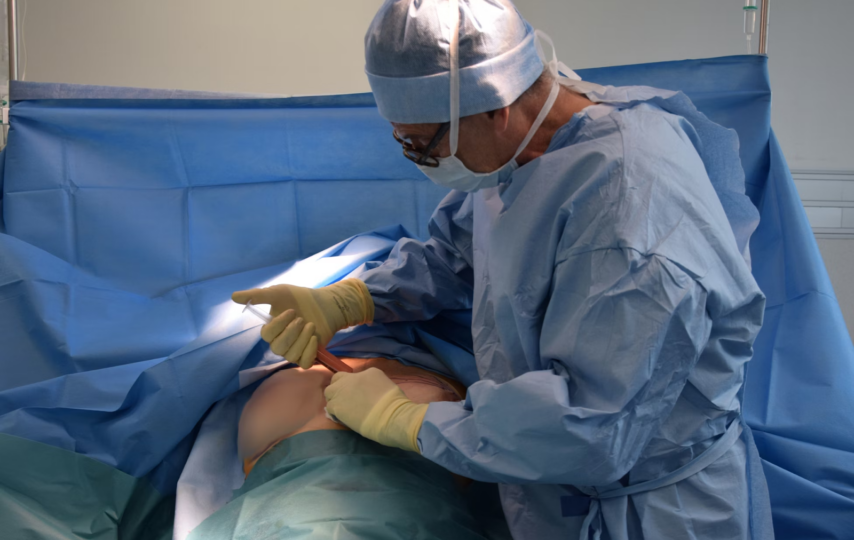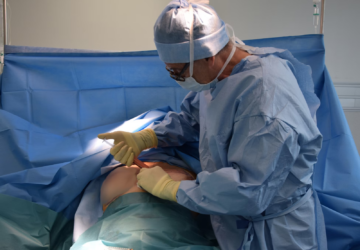In the past decade, hip surgery has undergone a remarkable transformation, thanks to the introduction of robotic-assisted technology. This innovation has revolutionized how surgeons perform hip replacements, providing patients with more precise outcomes and faster recovery times. Traditionally, hip replacement surgery involved significant manual intervention, but today, advanced robotic systems have become an essential tool in the operating room, improving surgical accuracy and minimizing human error. With the rise of these technologies, an increasing number of patients are experiencing enhanced outcomes, a faster return to daily activities, and a reduced overall risk of surgical complications. If you’re considering hip surgery, consulting with a highly skilled Hip Surgeon can help ensure you benefit from the latest advancements in this field.
The Role of Robotics in Hip Surgery
The surgical field has undergone a significant transformation with the advent of robotic-assisted procedures, which now enable hip replacement surgeries. The MAKO robotic arm, alongside other systems, serves surgeons by providing them with extreme precision during surgical procedures. The combination of advanced imaging technology with 3D mapping enables robotic surgery systems to achieve optimal surgical precision during planning and execution. During surgery, robots support surgeons by guiding them to make accurate incisions and helping them position the hip implant correctly. The enhanced precision benefits patients most strongly who are young or active, as well as those who require long-lasting hip replacements with optimal alignment.
Through robotic assistance, patients can receive highly personalized hip surgical procedures. The use of preoperative imaging enables surgeons to create 3D models of patients’ hip joints, allowing them to tailor surgical procedures to individual anatomies. The robot system helps surgeons reach the best achievable implant placement outcome. The precise alignment made possible by this method decreases the probability of implant failure and dislocation issues that can occur due to improper implant positioning.
Faster Recovery with Less Invasive Techniques
The main advantages of robotic-assisted hip surgery include both a shorter recovery period and reduced postoperative pain. The conventional approach to hip replacement demanded extensive incisions that generated longer hospitalization times and substantial blood loss as well as delayed recovery. The use of robotic-assisted procedures enables surgeons to create smaller incisions, which reduces tissue damage and speeds up the healing process.
The robotic systems operate to reduce trauma to surrounding muscle tissue because this is vital to minimize postoperative pain. The surgical outcome enables patients to resume their normal activities more quickly and suffer less postoperative discomfort. Robotic-assisted hip replacement allows patients to walk within hours of surgery and depart the hospital the next day, a stark contrast to traditional hip replacement hospital stays.
Enhancing Long-Term Outcomes
The accuracy achieved during hip replacement surgery yields benefits that extend beyond the initial recovery, as it leads to long-lasting success in the procedure. Proper placement of a hip implant leads to longer implant duration, which decreases the probability that patients will require additional surgical procedures in the future. Robotically assisted surgery enables surgeons to place implants accurately, thereby reducing the wear that prosthetic components experience. Younger patients and those who remain physically active require accurate implant placement, as they put more stress on their artificial hips.
Robotic surgery produces fewer complications in patients, such as infections and blood clots, while maintaining the safety measures associated with invasive surgeries. The enhanced surgical precision in robotic procedures decreases the probability of procedural mistakes, thus reducing the number of unfavorable outcomes that patients experience during their recovery period.
A Look at the Future of Robotic Hip Surgery
The upcoming developments in technology suggest that robotic-assisted hip surgery will become more beneficial. The surgical team works to embed artificial intelligence and machine learning technology inside these systems because it creates better customized and faster operations. The medical community aims to enhance surgical achievements while developing a complete diagnostic-to-recovery process that benefits patients.
The ongoing advancements in robotic-assisted surgery systems create opportunities to increase their accessibility for medical patients worldwide. Healthcare facilities will start implementing robotic technology because it is becoming more accessible, enabling them to provide advanced procedures to patients at affordable costs.
Conclusion
Patients who require hip replacements will find robotic-assisted hip surgery to be a transformative advancement. The precise robotic procedures combined with minimal invasiveness enable new opportunities for patients to recover more quickly and experience improved long-term results. Technological progress confirms that robotic-assisted surgery will continue to expand its importance in orthopedics, providing patients with individualized, effective, and efficient medical care. Patients seeking hip surgery should consult with a Hip Surgeon who specializes in robotic-assisted procedures, as this is likely to lead to superior treatment outcomes.







